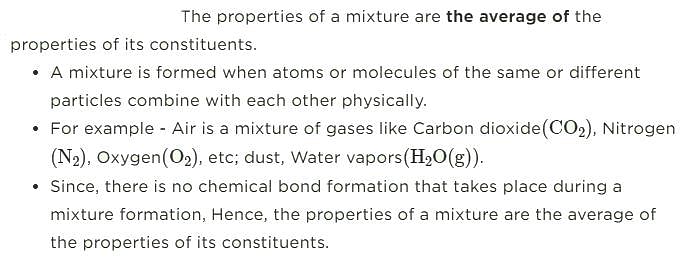HOTS Questions: Is Matter Around Us Pure - Class 9 MCQ
20 Questions MCQ Test Science Class 9 - HOTS Questions: Is Matter Around Us Pure
The properties of mixture are _________ from its components.
Which of the following is a colloidal solution?
| 1 Crore+ students have signed up on EduRev. Have you? Download the App |
Which of the following is a physical change?
When iron and sulphur are heated at high temperature
Which of the following has the highest solubility at 293 K?
The size of the colloidal particle is in the range of
Which of the following statements is true?
Which out of the following is a heterogeneous mixture?
The size of particles of true solutions is
40 g of common salt is dissolved in 320 g of water. The mass percentage of salt is
Which of the following is not a compound?
Which of the following statement is true about compounds?
The particles of colloidal solution can be separated by
Which of the following statement is always true when a substance undergoes physical change
What is the percentage of fat present in milk of full cream?
Which of the following is heterogeneous?
Kerosene oil and water can be separated by
|
87 videos|369 docs|67 tests
|


















